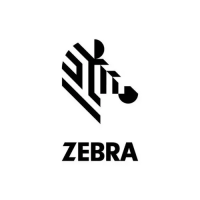
Do you have a question about the Zebra Z4M and is the answer not in the manual?
| Print Method | Thermal Transfer or Direct Thermal |
|---|---|
| Resolution | 203 dpi |
| Max Print Width | 4.09 inches |
| Max Print Speed | 10 inches per second |
| Interface | Parallel, Serial |
| Memory | 4 MB Flash |
| Media Sensors | Reflective and Transmissive |
| Media Width | 4.5 inches |
| Media Length | 39 inches (991 mm) |
| Ribbon Width | 1 to 4.33 inches |
| Media Thickness | 0.0023" (0.058 mm) to 0.010" (0.25 mm) |
Provides an overview of the user's guide content.
Instructions for safely unpacking and inspecting the printer for damage.
Guidance on how to report any shipping damage discovered.
Recommendations for storing the printer when not in use.
Details on the types of media and ribbon suitable for the printer.
Instructions on how to connect and power the printer.
A diagram and description of the printer's main components.
Explains the objective of calibrating the printer for optimal performance.
Describes different types of media like continuous and non-continuous.
Guidance on selecting between tear-off, peel-off, cutter, or rewind modes.
Step-by-step instructions for loading media into the printer.
Crucial steps for correctly positioning the media sensor for accurate detection.
Details on the function and use of the reflective media sensor.
Procedure for adjusting the reflective sensor for optimal label detection.
Details on the function and use of the transmissive media sensor.
Instructions on how to properly load a ribbon into the printer.
Describes the automatic calibration process performed by the printer.
Explanation of the buttons and indicators on the printer's front panel.
Overview of the front panel controls and display functions.
Steps for setting up printer parameters via the front panel.
Guidance on configuring printer settings through software or drivers.
Procedure for printing a test label to verify settings.
Factors to consider before establishing communication with the printer.
Information on available communication interfaces like serial and parallel.
Details on data transmission parameters for serial communication.
Guidelines for using appropriate shielded data cables for reliable communication.
Detailed description of the printer's front panel controls and indicators.
Explanation of the front panel display messages and status indicators.
Description of the functions for each key on the printer's front panel.
Explanation of the status indicated by the front panel lights.
Step-by-step guide for loading media rolls.
How to use the printer in tear-off mode for label dispensing.
Instructions for operating the printer with the cutter option.
Procedure for using the value peel-off feature for labels.
Details on using the liner take-up option for media management.
Operation of the power peel/rewind feature in peel mode.
Operation of the power peel/rewind feature in rewind mode.
Instructions for loading fanfold media.
Step-by-step guide for loading the printer ribbon.
Procedure for safely removing the ribbon from the printer.
How to access the printer's setup and configuration menu.
Steps to modify settings that are protected by a password.
Options for saving or discarding configuration changes.
Overview of the process for configuring and calibrating the printer.
Recommended cleaning schedule and procedures for printer maintenance.
Instructions for cleaning the printer's outer surfaces.
How to remove dust and lint from the printer's internal components.
Detailed steps for cleaning critical printhead and platen roller components.
Procedure for cleaning the various media and ribbon sensors.
Maintenance instructions for the power peel/rewind module.
Maintenance for the value peel-off module to ensure proper performance.
Procedure for cleaning the printer's cutter module.
Caution against using lubricating agents on the printer.
How to adjust printhead pressure for optimal print quality.
Adjustment procedure for proper media tracking onto the take-up spindle.
Instructions for safely replacing the printer's AC power fuse.
List of error messages and warnings displayed by the printer.
Common issues affecting print quality and their solutions.
Troubleshooting steps for connectivity and data transfer issues.
Information on running built-in diagnostic tests for the printer.
Details on the automatic self-test performed when the printer is powered on.
Description of various self-test routines available for printer analysis.
Procedure for running the CANCEL key self test.
Procedure for running the PAUSE key self test.
Procedure for running the FEED key self test.
How to perform a diagnostic test for communication issues.
Steps to restore the printer to its original factory default settings.
Overview of the printer's physical and electrical characteristics.
Technical details related to print resolution, speed, and length.
Information on ribbon width, length, and core requirements.
Details on label length, width, thickness, and roll diameter.
List of available optional features for the printer.
Features and capabilities of the ZPL II programming language.
List of supported barcode symbologies and their specifications.
Requirements for the AC power cord used with the printer.
Details on the specifications for the printer's power cord.
Technical data regarding printer communication interfaces and pinouts.
Detailed pin connection information for serial interfaces (RS-232, RS-485).
Detailed pin connection information for parallel interfaces (IEEE 1284).
Warranty coverage details for Zebra printers, excluding printheads.
Warranty terms for Zebra printer software and firmware.
Warranty coverage for batteries used in printer accessories.
Warranty terms for printer maintenance kits, options, and accessories.
Warranty coverage for media and ribbon supplies.
Details on general warranty exclusions, conditions, and limitations.
Specifies the rights granted to the user for software and firmware.
Outlines limitations on the use, modification, and reverse engineering of software/firmware.
Conditions under which the software and firmware license agreement may be terminated.
States Zebra's ownership of copyright for software, firmware, and materials.
Defines rights for software provided to the U.S. Government.
Details restrictions on exporting software and firmware according to U.S. law.
Disclaims all express or implied warranties for the software and firmware.
Limits Zebra's liability for any damages arising from software/firmware use.
Addresses liability for emulation libraries and general use.
Specifies the applicable laws governing the license agreement.
Contact information for Zebra Technologies Corporation.